Its seems like an age since I was able to open up the observatory and look through a telescope….and I’m right. The 3, November was the last time . Even more amazing was that the technology didn’t go tits up. I fired everything up, slewed to my first star and the target was well within the FOV of a 40 eyepiece. Apparently, I was not the only one who’s first outing for a while went smoothly. Two other fellow hi-tech observatory friends of mine had trouble free evenings on the same night which must be a record 🙂 Things were looking up 🙂
Tonight, I wanted to make inroads into my Caroline Herschel and Messier Lists, unfortunately the only item that was up high enough to be observable was M77. It’s looking like if I want to complete both these observing programmes, that I will have to either stay up later, or get up earlier, to bag these.
I also tried my hand at sketching my observations rather than using the voice recorder. While it does a better job at describing star fields and perhaps the boundaries of bright nebulosity, I did find it challenging to capture complex structures in nebulosity. I guess like everything else, it needs practice, but hopefully it might be able to record more detail, more accurately. I do need to find a way of illuminating the clip board so I don’t have to hold my LED red light as well as everything else. There must be a clipboard light out there that could be modified? The other problem is that in order to draw, I do need to wear my glasses at the eyepiece. With the Televue’s, this is easy, as I can push back the sliding eye guards , but on the Meade 40mm and 18mm, I can’t get close enough wearing glasses without taking off the rubber eye guards
Generally conditions were excellent and would have remained so, had the 76% illuminated Moon not started to rise in the East.
Session Data
- Date: 21/11/2013
- Time: 20:35 – 22:32 UT
- Temp: 2.3c,
- Air Pressure: 996Mb,
- Humidity: 99%,
- Dew point: ?c,
- Wind Speed: 6.0 MPH .
- Seeing: I Perfectly Stable,
- Transparency: Extremely Clear.
M77
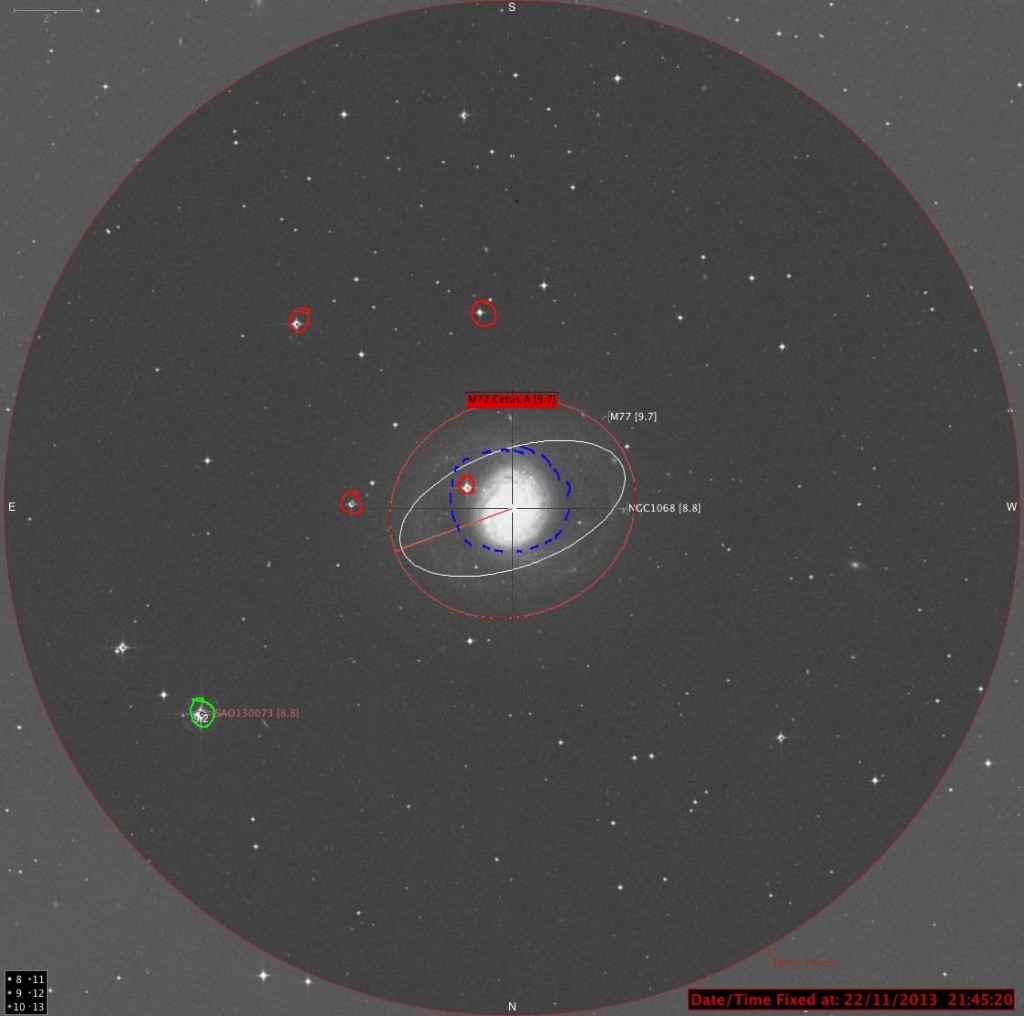
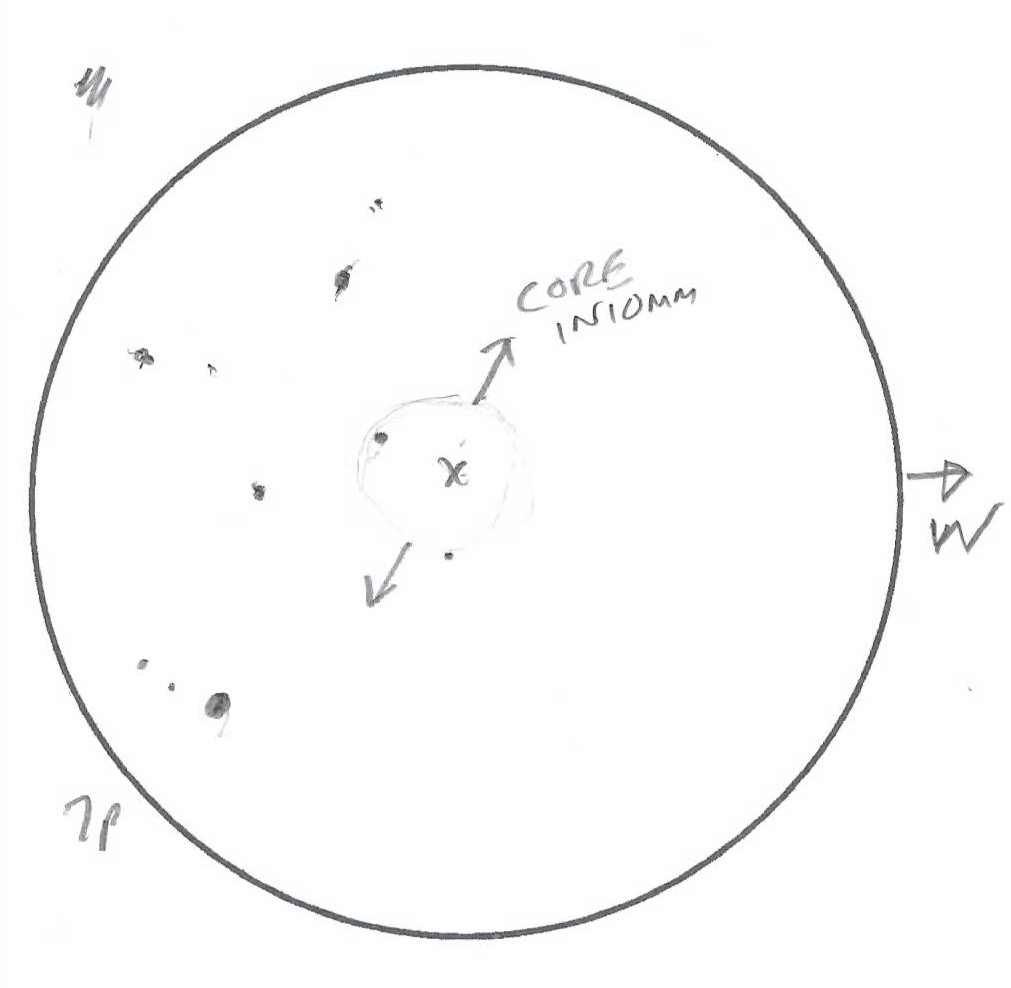
West is to the 3 O’Clock. Best views were with the Altair Astro 250mm, Delos 14mm, 145 X, 29.8′. Easily seen were four stars to the NE forming a Trapezium. The brightest star (8.8 mag) was to the SE. The core of the galaxy appeared to run NW/SE, although this was only seen when adverted vision was used.
NGC281
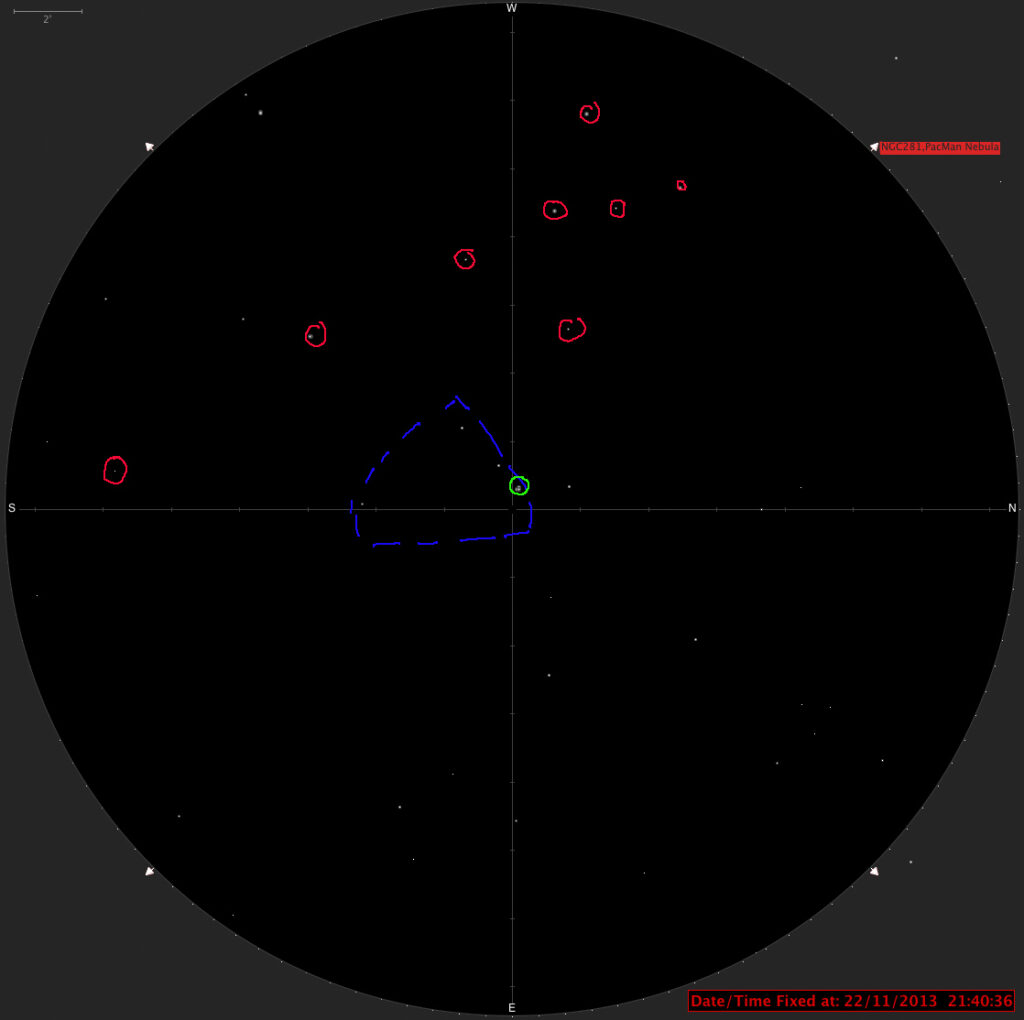

West is to the 12 O’Clock. Again, best views were with Altair Astro 250mm, Delos 14mm, 145 X, 29.8′. The principle stars visible ran along a line running NW to the SE at the Western side of the FOV.
Moving to the Altair Astro 250mm, Delos 10mm., 203 X, 21.3′, three stars lie at the NE edge of a patch of nebulosity. The SW star in this group appears with a hint of Yellow/Orange, while the other two were bluer. The outer extremities of the nebula was tricky to make out, but the rough shape is drawn in the sketch. When you overlay the DSS image, this bears no relation to what I’m observing and is considerably smaller.
NGC1981
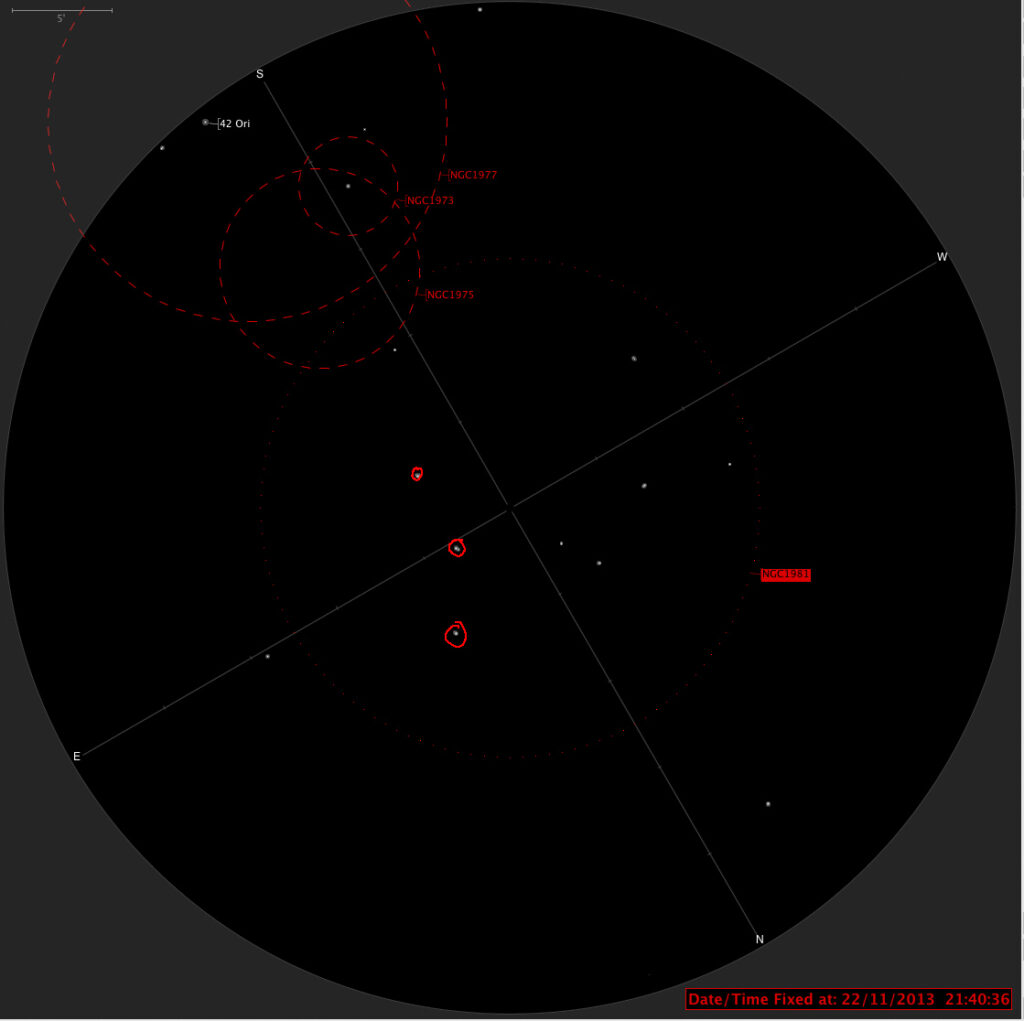
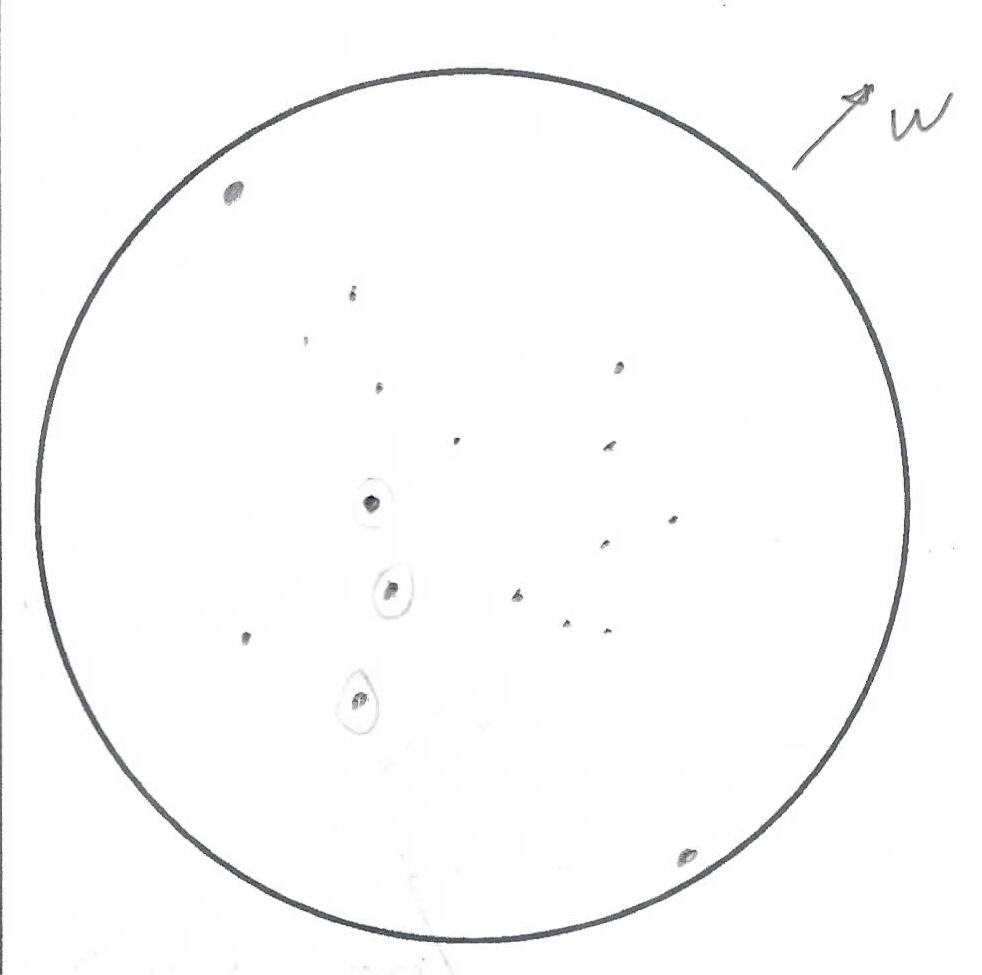
West is to the 2 O’Clock and in order to cram everything in I observed using Altair Astro 250mm, Plossl 40mm, 51 X, 50.8′. The image above suggests NGC1977, 1973 and 1975 should be visible, but at the time all I could see where the stars displayed in the sketch. The three stars marked had halos which generally means these is surrounding nebulosity, but this was not apparent anywhere except around the star.
Generally disappointing, but Orion wasn’t that high and by now the Moon was becoming conspicuous. Next time I need to concentrate on the other NGC objects towards the South and see if I can eak out any nebulosity here.
M42
The Moon really was becoming annoying, so a quick tour to M42, which is always a ‘WOW’ object no matter how bad the viewing conditions are. I did try to sketch what I saw, but the nebulosity is so complex, the drawing became rather a mess, so it got binned. I will try sketching again next time I observe and see if I can make better sense of what I’m observing.